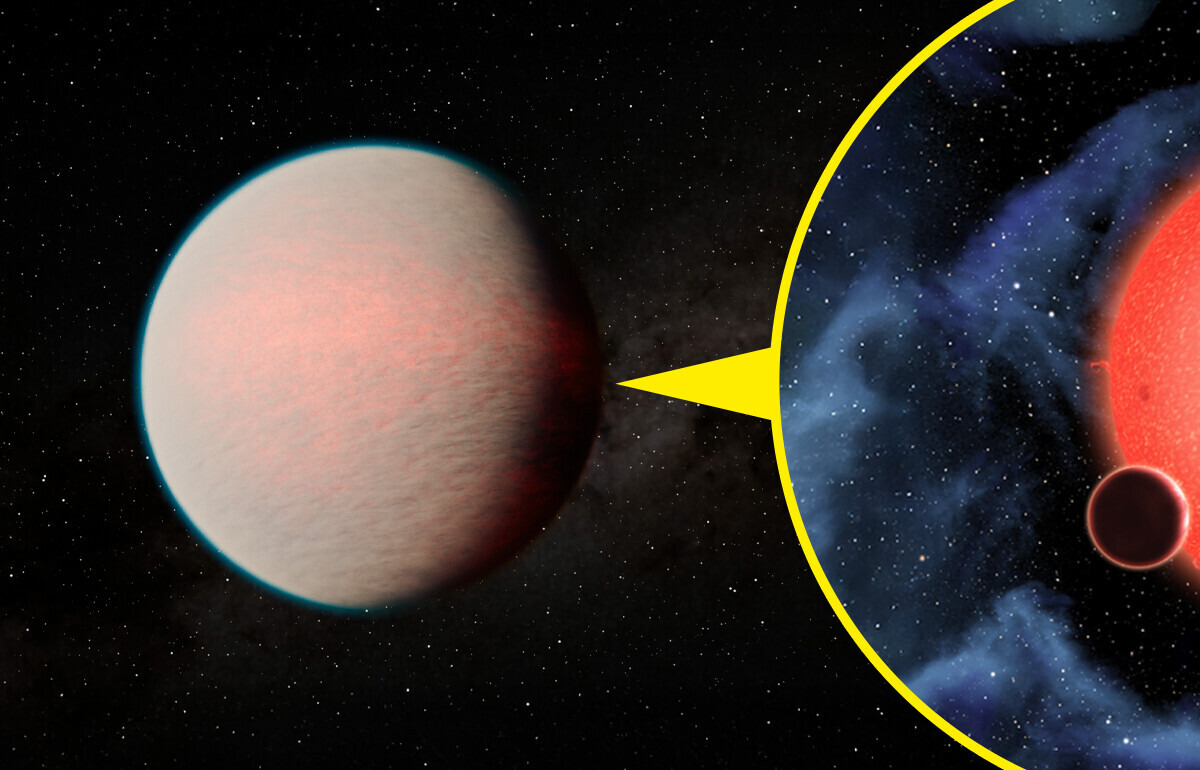Jennifer Aniston Is Transformed in New Look, Leaving People Stunned


Imagine you’ve spent your whole life learning the rules of chess, and suddenly someone comes along with a new piece that zigzags across other pieces and can teleport. Well, something like that just happened to astronomers with a recently discovered exoplanet that challenges everything we thought we knew about how worlds form.
But how did they find it? What makes this world so special? Could there be more planets like it waiting to be discovered? Join us as we explore this discovery that could rewrite what we know about the universe.
The protagonist of today’s article is called GJ 1214 b, or “Enaiposha” to friends, a name meaning “large body of water” in Maa, a language spoken by the Maasai of Africa. And why did it receive this picturesque name? Well, because astronomers thought it was probably a watery and rocky world larger than Earth, or a smaller version of our solar system’s ice giant Neptune. The research teams published their peer-reviewed findings in two new papers on October 16, 2024 and January 14, 2025.
This mysterious subject orbits a red dwarf 48 light-years from Earth and was discovered in the direction of the constellation of Ophiuchus, a region of space where other strange exoplanets have been found, but none like this one. The first observations showed that Enaiposha is a world with a radius 2.7 times that of Earth and a mass eight times greater. So far, we could think of it as a “super-Earth”. But by analyzing its density, astronomers realized that it’s not dense enough to be rocky, but it also doesn’t have the typical composition of gaseous planets. In other words, it’s an oddball.
Most puzzling is its atmosphere. Thanks to observations by the James Webb Space Telescope (JWST), astronomers have discovered an unexpected mix of elements: hydrogen, helium, methane, carbon dioxide, and... water! This brings it closer to being a “super-Venus,” a type of planet that has only existed in theory. But there’s a problem: Enaiposha shouldn’t exist in this state, because it doesn’t fit our current models of planet formation. So how did this mysterious world come to be?
The discovery of Enaiposha was made possible by the cutting-edge technology we use to scan the cosmos. In particular, the James Webb Space Telescope, which used spectroscopy to analyze the planet’s atmosphere as it passed in front of its star. This method allows us to see what elements are absorbing light from the star and thus determine what the atmosphere is made of.
What they found was puzzling, but Enaiposha is real and defies our current categories. This discovery shows the power of the new generation of telescopes like TESS (Transiting Exoplanet Survey Satellite) and JWST. These tools allow us to detect planets that were previously invisible to us and, more importantly, to analyze their composition in unprecedented detail. But finding such a planet is not only exciting, it is also a challenge.
The presence of water in its atmosphere could lead us to believe that Enaiposha could be habitable. But let’s not get our hopes up too high. Its atmosphere is too dense, and its temperature is too high to support life as we know it.
Still, this discovery makes us wonder: how many planets like this are waiting to be found? If Enaiposha exists, could there be other “super-Venus” scattered throughout the galaxy? Could there be worlds with even stranger conditions, capable of completely challenging what we believe about life in the universe?
It is very likely that astronomers will continue to do research to learn more about this planet and other exoplanets, and who knows... maybe this is just the first of many worlds that will rewrite our astronomy books.
The discovery of Enaiposha may be the tip of the iceberg. Something that was unthinkable just a few decades ago is now a reality, showing us that the universe is much more diverse than we thought and that perhaps our planetary classifications are too rigid.
If we have found a planet that does not fit into any of our categories, what other surprises await us? This finding also underscores the importance of continuing to explore space with ever more advanced telescopes, because we clearly have a long way to go.
If you want to continue exploring the mysteries of the universe, we invite you to read our article about one of the strangest exoplanets ever found. Some of these worlds seem straight out of science fiction, with features that defy logic and invite us to imagine what else might be out there, waiting to be discovered. Don’t miss out, the space adventure has just begun!











